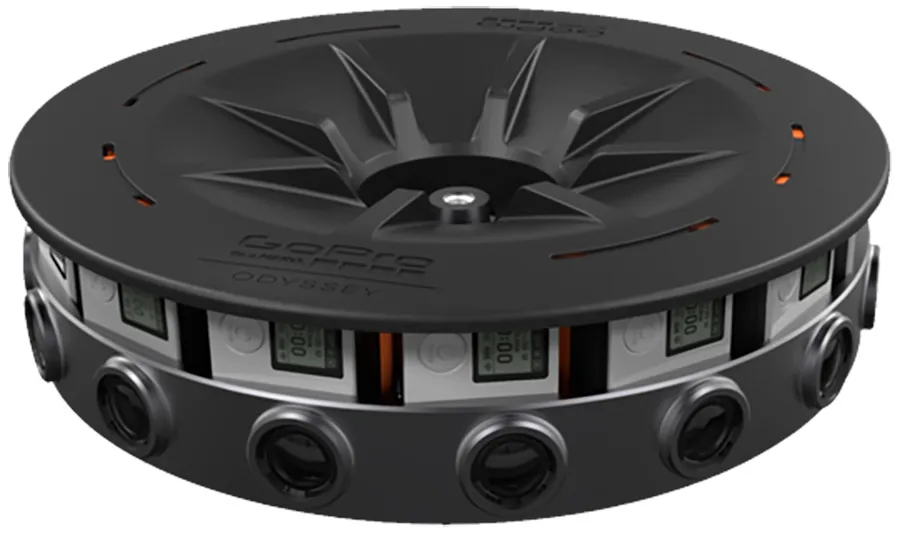GoPro’s Odyssey camera rig will see limited availability by the end of the year and features 16 HERO4 Black cameras synced together to shoot stereoscopic footage that can be assembled by Google Jump and uploaded to Youtube for playback. The rig will cost $15,000 and is available through a limited access program that requires interested professionals apply to buy one.
The video below was shot with Odyssey in New York and shows impressive time lapse and night shots with small blind spots at top and bottom of the scene. I couldn’t see any obvious stitching problems viewing the video on a traditional monitor but I didn’t look closely. Viewing the content in VR would likely make stitching problems more pronounced.
GoPro released many of the hardware specifications, including a weight of 14.5 pounds. It shoots up to 30 frames per second and includes 16 internal microphones with support for external microphones. The system outputs via Google Jump in the h.264 codec as a .mp4 file at up to 8K resolution. The kit appears to include a 64 gigabyte microSD card for each camera and the cables and hardware to keep the cameras synced for use as a single unit. There’s also a pelican case to carry the rig.
Where the Odyssey really excels though beyond your traditional GoPro Jump rig is that it is fairly self contained. Homemade rigs using Google’s open setup combine 16 individual GoPro cameras which means 16 SD cards, 16 messy cables creating a rats nest near your camera, etc. It just becomes a mess after a while. The Odyssey fixes these issues by taking all 16 cameras and syncing them together, “down to the pixel level to function as one camera.” This allows for fewer cables and headaches for content creators, creating videos that are formatted and ready for upload thanks to the software that Google brings to the table.
With the new Ricoh Theta S bringing up the low end of the panoramic (non-stereoscopic) VR content capture market for $350, shooting up to 25 minutes of footage, we now have some details about both high and low end cameras to consider for capturing content for the launch of consumer VR. With the holidays coming up it is likely we will get details on other camera and viewing systems for VR in the coming months. Notably, we still need details on OZO from Nokia, Project Beyond from Samsung and NEO from Jaunt.
It will also be interesting to see how software improves to make editing this kind of panoramic footage easier and how long it will take on an average Internet connection to get it uploaded to a site like Youtube.


























